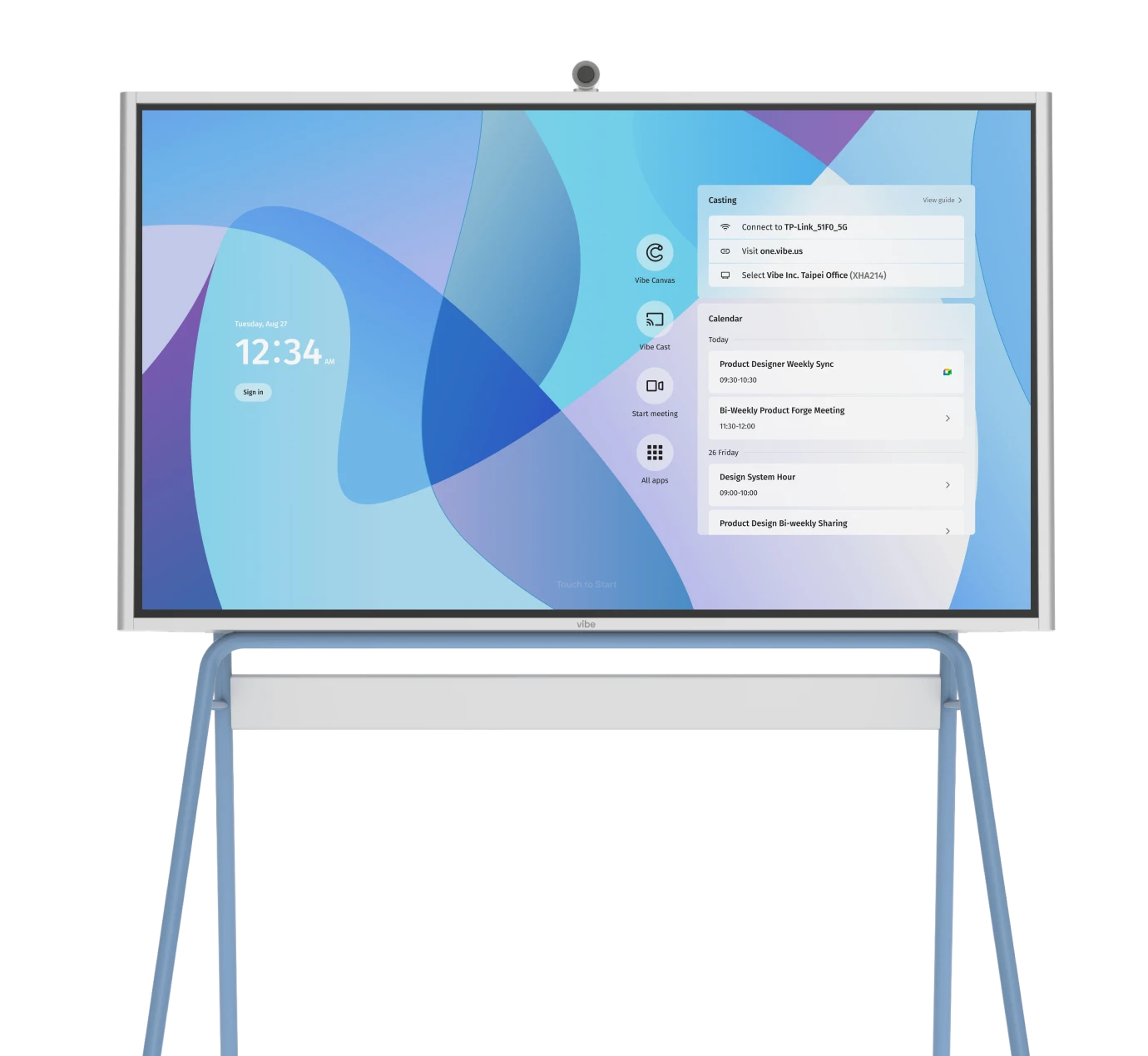Creating compelling classroom presentations has traditionally consumed hours of teachers’ valuable time—time that could be better spent on direct student interaction, personalized instruction, or professional development. According to McKinsey research conducted in partnership with Microsoft, teachers work approximately 50 hours per week, with an average of 11 hours dedicated to preparation activities like creating lesson plans and class slides. With AI-powered presentation tools emerging as game-changers in education technology, that equation is rapidly shifting.
The Current Challenge: Why Traditional Presentation Creation Falls Short
Before diving into AI in education, it’s important to understand the pain points teachers face with conventional presentation creation:
-
Time consumption: Manually designing slides, sourcing images, and formatting content
-
Design limitations: Not every educator has graphic design skills
-
Personalization barriers: Creating multiple versions for different learning levels is labor-intensive
-
Content research: Finding age-appropriate, curriculum-aligned materials takes significant effort
-
Accessibility challenges: Ensuring content works for diverse learners requires additional tools and expertise
6 Ways AI Is Revolutionizing Teacher Presentation Creation
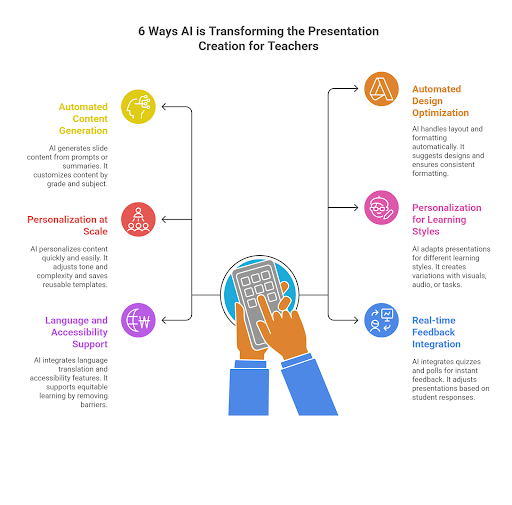 Infographic showing 6 ways AI transforms presentation creation for teachers
Infographic showing 6 ways AI transforms presentation creation for teachers1. Content Creation That Understands Educational Context
Modern AI presentation tools are designed to understand educational contexts rather than simply generating generic text. These tools can adapt content complexity based on grade level specifications and maintain educational accuracy.
When teachers input a topic like "Revolutionary War causes" and specify a grade level, the AI generates content that matches appropriate reading levels and includes relevant historical context. The content adapts vocabulary complexity, explanation depth, and conceptual focus based on the intended audience.
This approach significantly reduces content creation time. Teachers can focus on reviewing and customizing AI-generated content rather than starting from scratch, transforming what traditionally takes hours of research into a process of refinement and personalization.
2. Classroom-Optimized Design Elements
In the past, presentation design often failed when projected in actual classroom environments. AI tools built for education address these practical constraints by automatically optimizing visual elements for classroom settings.
These tools select high-contrast color combinations that remain readable under fluorescent lighting. Font sizes are automatically adjusted based on typical classroom viewing distances. Text-to-visual ratios are balanced to prevent cognitive overload while maintaining classroom engagement.
The automatic formatting ensures consistency across slides, reducing visual distractions that can interfere with learning. These design optimizations help maintain student focus on content rather than struggling with readability issues.
3. Scalable Differentiation for Different Learning Levels
Creating multiple versions of presentations for different ability levels has traditionally been time-prohibitive. AI for lesson planning helps teachers easily create multiple versions of a lesson from a single set of content, making it simple to address different learning needs.
Teachers can create variations of the same lesson with different complexity levels. An AP Biology lesson on photosynthesis might include detailed molecular diagrams and complex terminology, while a general biology version focuses on fundamental concepts with simplified explanations, and a special education version incorporates visual supports and reduced text density.
This approach enables teachers to address diverse learning needs without multiplying preparation time. English Language Learners benefit from automatically simplified sentence structures and defined vocabulary terms, while advanced students receive more detailed explanations and challenging concepts.
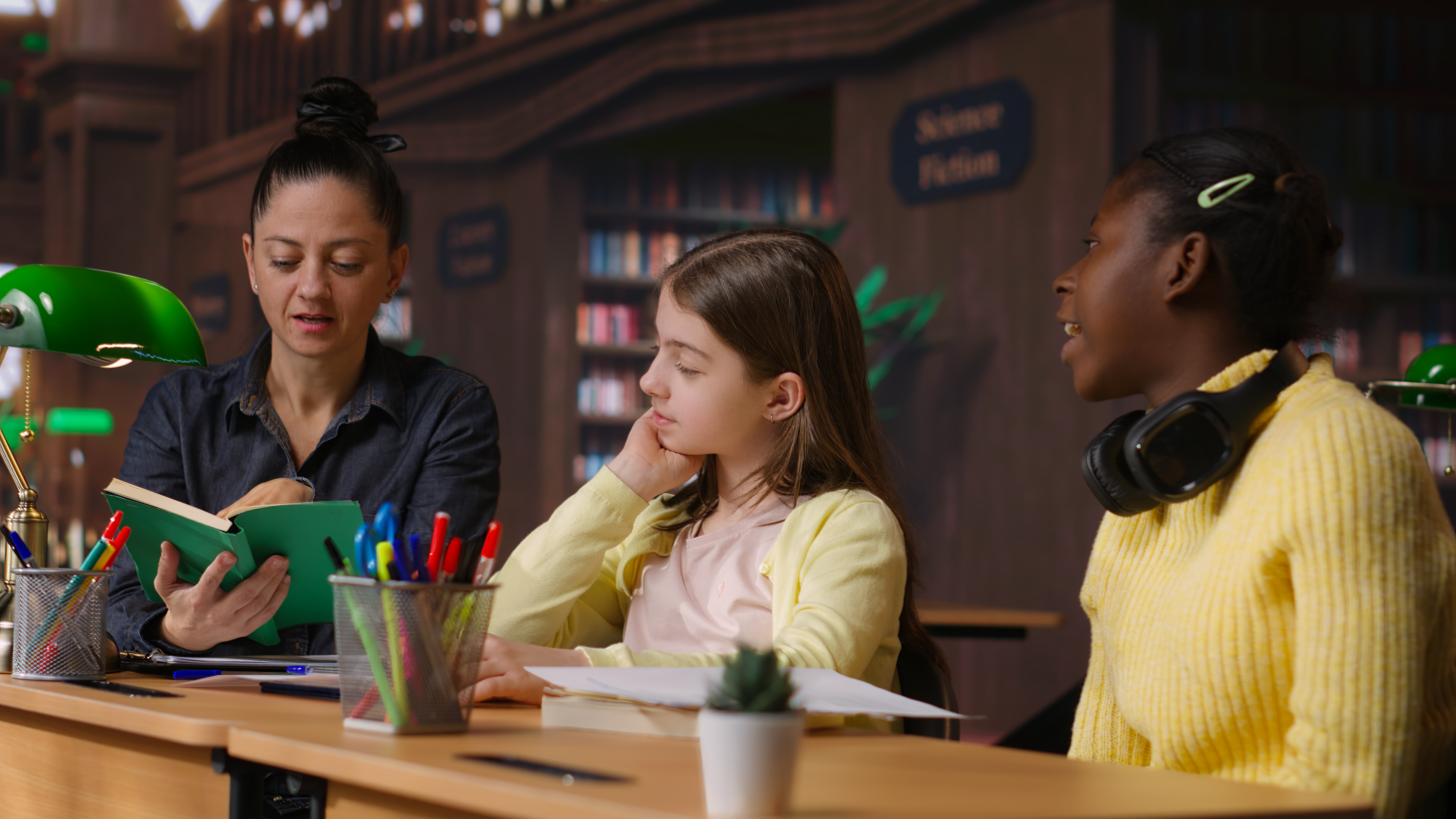
4. Built-in Accessibility Features
Accessibility compliance traditionally required additional post-creation work that many teachers lacked time to complete. Modern AI presentation tools support accessibility throughout the creation process, helping teachers maintain WCAG compliance more efficiently.
Images automatically receive descriptive alt text through computer vision technology. Color combinations are verified for sufficient contrast ratios. Formatting remains compatible with screen readers without requiring manual adjustments.
Multi-language support enables real-time content translation, helping teachers accommodate students from diverse linguistic backgrounds. These accessibility features are embedded in the standard workflow rather than requiring separate tools or processes.
5. Embedded Interactive Elements
Traditional presentations follow a one-way communication model that can limit student engagement. AI-enhanced presentations incorporate interactive elements that transform passive viewing into active participation.
Teachers can embed comprehension checks, polls, and discussion prompts directly within the presentation flow. Real-time feedback helps identify when students struggle with concepts, enabling immediate instructional adjustments rather than discovering gaps during later assessments.
These interactive features provide data on student understanding patterns, common misconceptions, and engagement levels throughout the lesson. Teachers can use this information to modify pacing, revisit difficult concepts, or provide additional examples as needed.
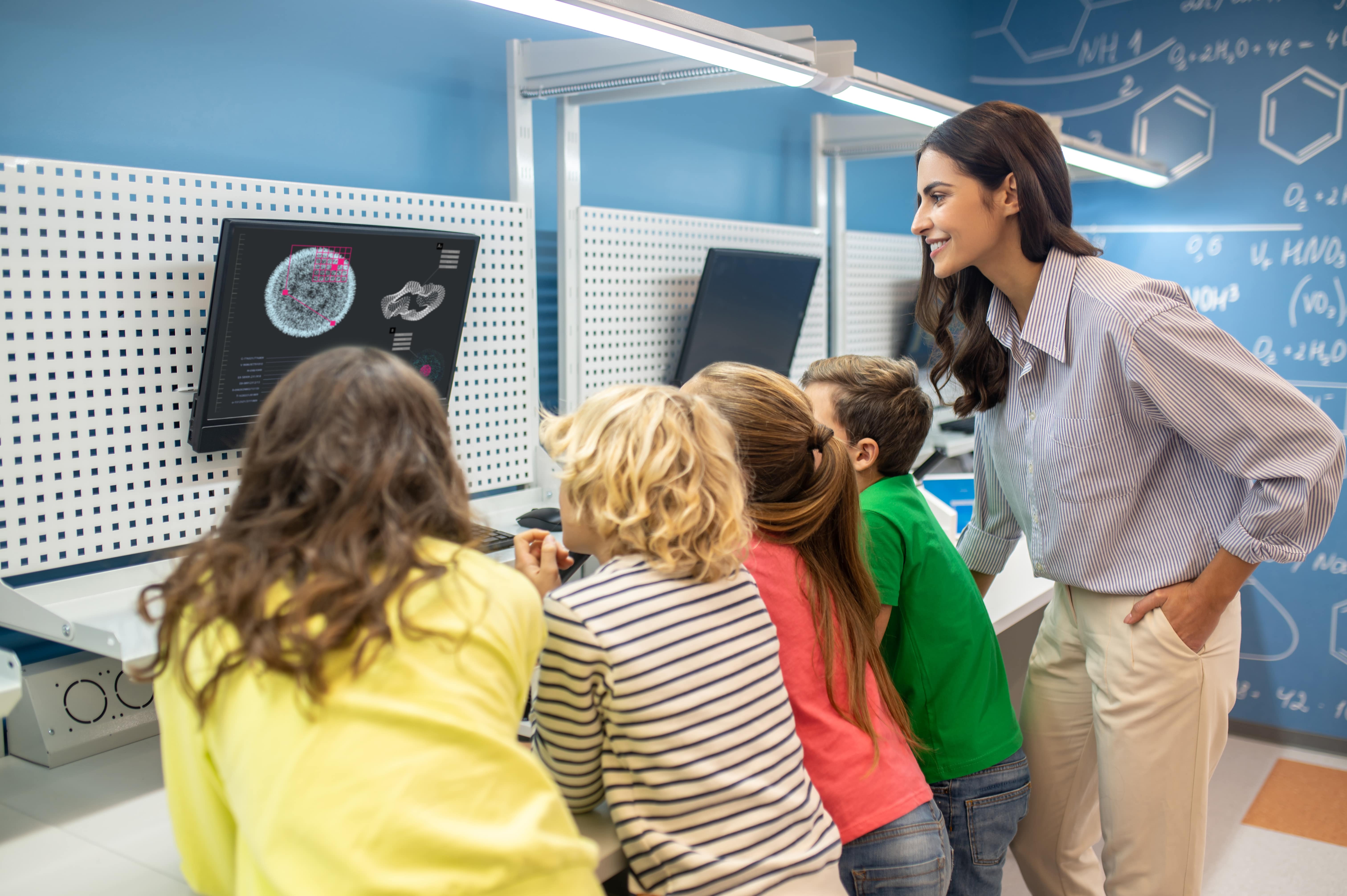
6. Streamlined Standards Alignment
Aligning lesson content with educational standards has traditionally involved time-consuming cross-referencing and documentation. AI tools can automatically tag content with relevant standards and suggest appropriate learning objectives.
This automation extends beyond initial lesson planning. When administrators require standards documentation, the information is already organized and accessible. Assessment rubrics can be generated in alignment with the standards addressed in the presentation content.
Rather than treating standards alignment as separate administrative work, these tools integrate it into the content creation process, making compliance more meaningful and less burdensome for teachers.
Getting Started: A Practical Implementation Guide
Phase 1: Tool Selection (Week 1)
-
Evaluate your specific needs: Subject area, grade levels, tech comfort level
-
Trial period: Most AI presentation tools offer free trials—test 2-3 options
-
Integration check: Ensure compatibility with your existing classroom technology
Phase 2: Basic Implementation (Weeks 2-3)
-
Start small: Create one presentation per week using AI assistance
-
Focus on time-savers: Use AI for content generation and design, manual refinement
-
Student feedback: Ask students about engagement and clarity compared to traditional presentations
Phase 3: Advanced Features (Month 2)
-
Explore personalization: Create differentiated versions for different student groups
-
Interactive elements: Incorporate polls, quizzes, and real-time engagement features
-
Assessment integration: Use data insights to improve future presentations
Addressing Common Concerns
"Will AI Replace the Personal Touch in Teaching?"
AI tools are designed to handle the mechanical aspects of presentation creation, freeing teachers to focus on what they do best: inspiring, connecting with, and guiding students. The personal touch comes in how you deliver the content, facilitate discussions, and respond to student needs—areas where human expertise remains irreplaceable.
"What About Content Accuracy?"
While AI significantly speeds up content creation, teacher review and validation remain crucial. Think of AI as a highly capable research assistant that provides a strong starting point, not a final product. Always fact-check and ensure content aligns with your curriculum standards.
"Is This Technology Accessible to All Teachers?"
Most AI presentation tools are designed with user-friendliness in mind, requiring no technical expertise. Many offer educator-specific pricing and extensive support resources. The learning curve is typically shorter than mastering traditional design software.
The Future of AI in Educational Presentations
As AI technology continues advancing, we can expect to see:
-
Voice-activated presentation creation: Teachers describing lessons verbally and having presentations automatically generated
-
Real-time language translation: Seamless multilingual classroom experiences
-
Predictive content suggestions: AI recommending supplementary materials based on curriculum pacing
-
Integration with learning management systems: Seamless workflow from presentation to assignment to assessment
Making the Transition: Your Next Steps
The shift toward AI-assisted presentation creation isn’t just about adopting new technology—it’s about reclaiming time for what matters most in education: meaningful interaction with students.
Immediate action items:
-
Audit your current presentation creation process: Track time spent on different aspects
-
Identify your biggest pain points: Design, content research, differentiation, or assessment integration
-
Start with one AI tool trial: Focus on addressing your primary pain point first
-
Measure the impact: Compare time spent, student engagement, and your own satisfaction
The transformation of classroom presentations through AI represents more than just efficiency gains—it’s about empowering educators to focus on inspiration, creativity, and human connection while technology handles the time-consuming mechanics of content creation.



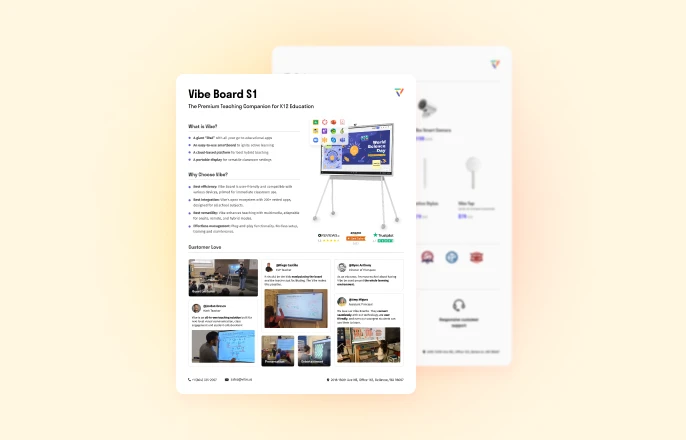
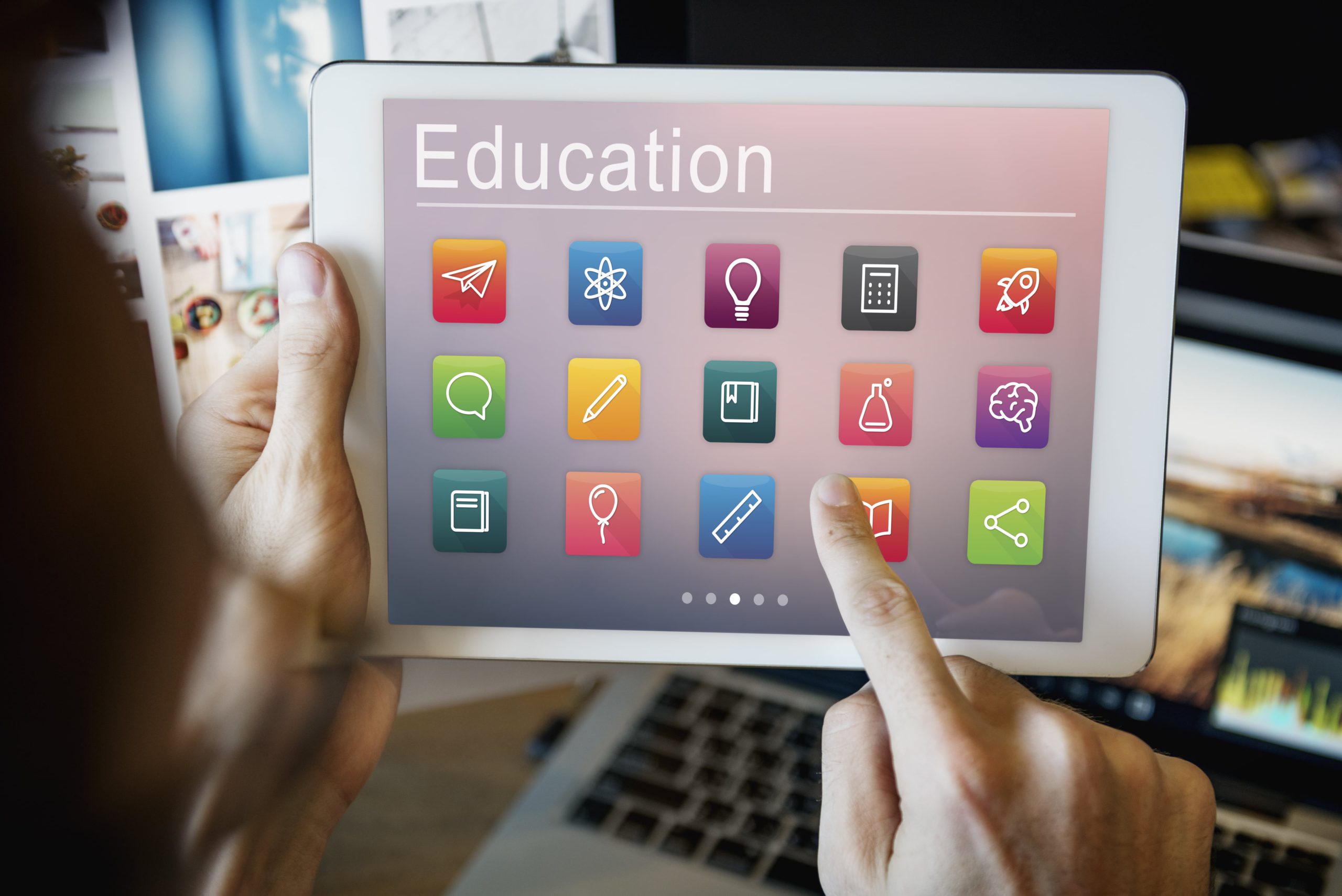



-1sbltxxq4FYxHrXrwJVLsCDNsXpqNa.webp)
-5Zp0pmSytvcuYDVs1LvuwplKuRneK0.webp)
